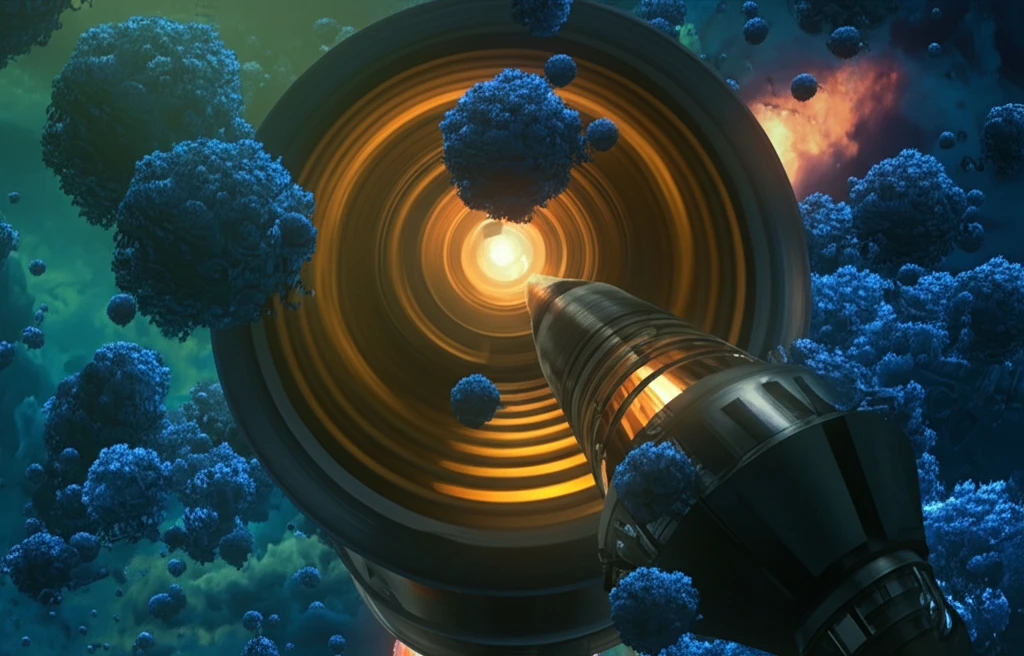
Fueling the Future: How Nanotechnology is Revolutionizing Solid Propellants
"Discover how cutting-edge research into nano-additives is enhancing the performance and stability of solid propellants, paving the way for safer and more efficient space travel and defense systems."
For decades, solid propellants have been the unsung heroes powering rockets and missiles, providing the necessary thrust for everything from satellite launches to national defense systems. However, traditional solid propellants have limitations in terms of efficiency, ignition reliability, and overall performance. Enter nanotechnology, a field that's rapidly transforming materials science and offering innovative solutions to long-standing challenges in propellant technology.
Recent research has focused on incorporating nano-sized additives into composite solid propellants to enhance their properties. These nano-additives, often metal oxides like titanium dioxide (titania) and iron oxide, act as catalysts to improve ignition, increase burning rates, and stabilize propellant combustion. The results are paving the way for a new generation of solid propellants that are safer, more efficient, and more reliable.
This article delves into the latest advancements in composite solid propellants using novel nano-additive catalysts. We'll explore how these tiny particles are making a big impact on the performance and characteristics of solid propellants, opening up exciting possibilities for future applications in aerospace and defense.
The Science Behind Nano-Additive Catalysts: How Do They Work?

The key to understanding the benefits of nano-additives lies in their catalytic properties. These nanoparticles act as catalysts, accelerating chemical reactions within the propellant that lead to ignition and combustion. The effectiveness of a nano-additive depends on its ability to influence specific stages of propellant decomposition.
- Enhanced Ignition: Nano-additives can lower the ignition temperature of the propellant, making it easier to ignite and more reliable in various operating conditions.
- Increased Burning Rate: Catalytic effects can accelerate the rate at which the propellant burns, leading to greater thrust and improved performance.
- Improved Stability: Nano-additives can help stabilize the combustion process, preventing unwanted oscillations and ensuring consistent performance.
The Future of Solid Propellants: A Nano-Enhanced Horizon
The research into nano-additive catalysts for solid propellants represents a significant step forward in propulsion technology. By carefully selecting and incorporating these tiny particles, scientists and engineers can tailor the performance of solid propellants to meet the demands of future space missions and defense systems. With ongoing research and development, nano-enhanced solid propellants promise to deliver increased efficiency, reliability, and safety, paving the way for new possibilities in aerospace and beyond.
